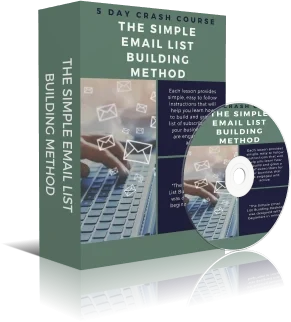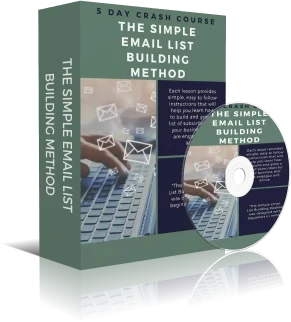
Newsletter Sign Up
With FREE List Building Course!
Our newsletter contains useful tips, notification of events and offers. You may cancel your subscription at anytime. Plus receive The Simple Email List Building Method 5 day crash course FREE when you subscribe!.
The A-Z Of Digital Marketing: Glossary
19 May 2023
Table of Content
- Abandoned Cart
- Affiliate
- Affiliate Marketing
- Affiliate link
- Affiliate program
- A/B testing
- Analytics
- Audience
- Autoresponder
- B2B
- B2C
- Backlink
- Bio page
- Blog
- Bounce rate
- Brand
- Campaign
- Cold email
- Commission
- Conversion
- CTA
- Digital product
- Domain
- Downsell
- Ecommerce
- Email list
- Email marketing
- Evergreen
- Exit Intent
- Landing page
- Lead generation
- Lead magnet
- Niche
- Organic traffic
- Passive income
- Pop-up
- Promotional codes
- ROI
- Sales funnel
- Scarcity
- Segmentation
- SEO
- Short link
- Social media
- Target audience
- Traffic
- Transactional Emails
- Upsell
- UX
- Video Marketing
- Webinar
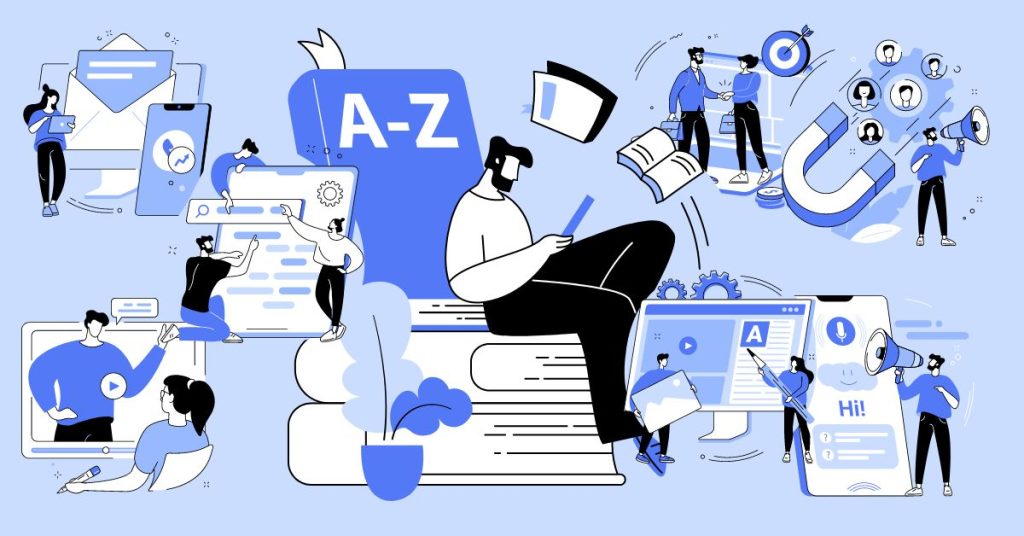
Welcome to the A-Z of digital marketing ultimate glossary for digital marketing beginners! In today’s fast-paced, technology-driven world, understanding the ever-evolving landscape of digital marketing is crucial for businesses and individuals alike. Whether you’re a seasoned marketer or just starting your journey, having a comprehensive understanding of the industry’s key concepts, terminologies, and strategies can make all the difference in achieving online success.
This article serves as your go-to resource, presenting a comprehensive A-Z glossary that demystifies the complex jargon surrounding digital marketing. From A/B testing to ROI, SEO to UX, we’ll explore the essential terms and concepts that underpin the dynamic world of online marketing.
In this user-friendly guide, we’ll break down the most important terms into digestible explanations, providing clarity and empowering you to navigate the digital marketing landscape with confidence. By the end of this article, you’ll have a firm grasp on the essential terminology that will help you communicate effectively with digital marketing professionals, stay ahead of the competition, and maximize your online presence.
Whether you’re looking to optimize your website for search engines, leverage social media platforms to reach your target audience, or utilize cutting-edge tools and techniques, this glossary has got you covered. So, let’s dive in and unravel the A-Z of digital marketing, unlocking the power of this ever-expanding field.
Abandoned Cart
Imagine you’re shopping in a physical store, picking out items, and then suddenly decide to leave without buying anything. In the world of online shopping, this is what’s called an “abandoned cart.” It happens when you put items in your online shopping cart but then leave the website without completing the purchase. Just like leaving a real shopping cart full of items in the store aisle, an abandoned cart means you were interested in buying, but for some reason, you didn’t finish the process. Online businesses often try to remind you about your abandoned cart with emails or offers, hoping you’ll come back and complete the purchase.
Affiliate
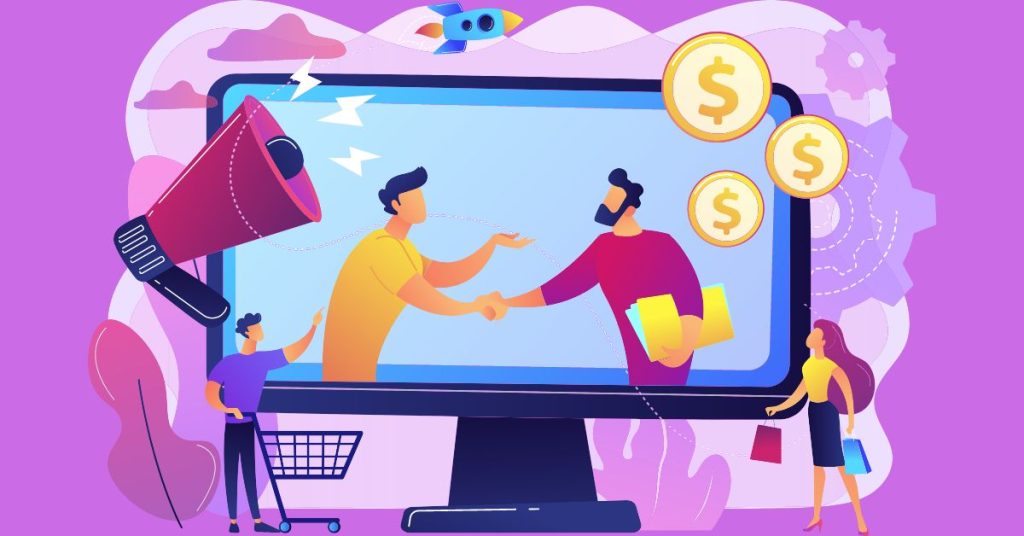
Known as affiliates or sometimes affiliate marketers, these ar individuals who promote products or services on behalf of another business or company, referred to as the advertiser or merchant. Affiliates earn a commission or a predetermined reward for each sale, lead, or action generated through their promotional efforts.
Under this arrangement, the affiliate acts as a middleman between the advertiser and the potential customers. They leverage various marketing channels such as websites, blogs, social media platforms, email marketing, or even word-of-mouth referrals to drive traffic and encourage conversions.
Affiliates are typically provided with unique tracking links or promotional codes that allow the advertiser to trace the origin of the customer or lead back to the affiliate. This tracking mechanism ensures accurate measurement of the affiliate’s contribution and facilitates the calculation of commissions or rewards.
The affiliate has the opportunity to monetize their online presence, content, or influence by promoting products or services that align with their own audience’s interests.
Affiliate Marketing
Affiliate marketing is a type of performance-based marketing strategy in which individuals, known as affiliates, earn a commission by promoting products or services on behalf of a business or advertiser. It is a mutually beneficial arrangement where affiliates act as independent marketers, driving traffic and generating sales or leads for the advertiser’s products or services.
Affiliate link
Used in affiliate marketing, whereby the advertiser provides the affiliate with a unique link (the affiliate link) which consists of a link to the product being promoted in addition to tracking that enables the advertiser to identify which sales or leads originated from specific affiliates.
Affiliate program
An affiliate program is a marketing initiative established by a business or advertiser that allows individuals, known as affiliates, to promote their products or services in exchange for a commission or other rewards. It is a structured system that enables the business to leverage the marketing efforts of affiliates to drive traffic, generate sales, and expand their customer base.
A/B testing
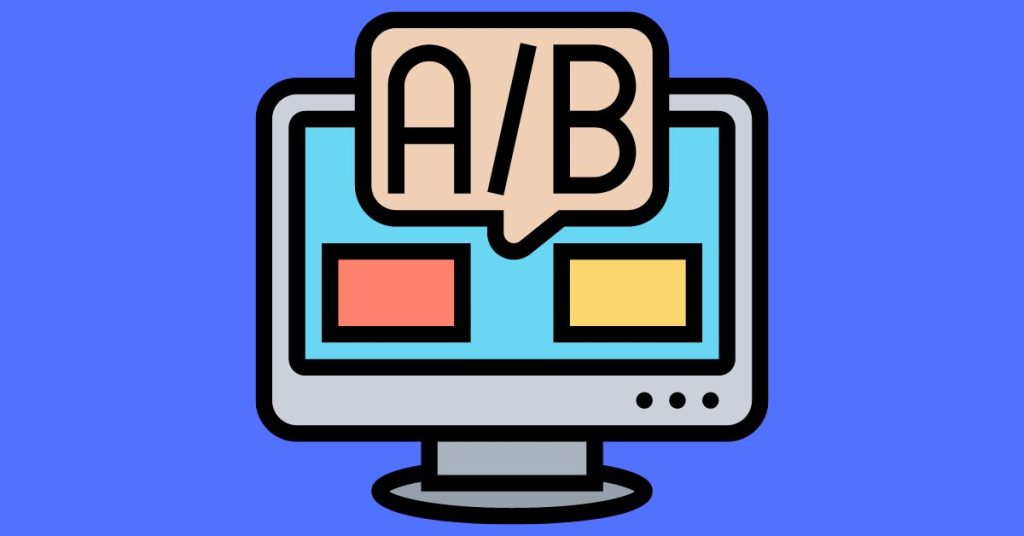
A/B testing, also referred to as split testing, is a method used in marketing and web development to compare two different variations of a webpage, email, ad, or any other marketing asset. The purpose of A/B testing is to determine which variation performs better in terms of achieving a desired outcome, such as increasing conversions, click-through rates, or user engagement.
Analytics
Analytics refers to the process of collecting, analyzing, and interpreting data to gain insights and make informed decisions. It’s like using numbers and information to understand how things are working and to figure out what might be improved. In various fields, including business, science, and technology, analytics involves examining data patterns and trends to uncover valuable information that can guide actions and strategies. It helps answer questions, solve problems, and make predictions based on the evidence provided by the data. Just like a detective uses clues to solve a mystery, analytics uses data to unravel patterns and uncover valuable insights.
Audience
An audience is like a group of people who are paying attention to something. It’s the bunch of individuals who are watching a movie, listening to a speaker, or reading a book. For example, if you’re performing on a stage, the people sitting and watching you are your audience. In business and marketing, an audience refers to the specific group of people that a message, product, or service is aimed at. Just like a movie is meant for certain types of viewers, businesses tailor their messages and offerings to suit the interests and needs of a particular audience.
Autoresponder
An autoresponder is a platform or tool commonly used in email marketing that automatically sends pre-written messages or emails to subscribers or recipients in response to specific triggers or actions. It allows businesses and individuals to streamline their communication and engage with their audience effectively without manual intervention for each interaction.
B2B
B2B stands for “business-to-business.” It’s like when one company is doing business with another company. Instead of selling directly to individual customers, a B2B company sells products or services to other businesses. For example, a company that makes computer parts might sell those parts to other companies that build computers. B2B transactions involve products or services that are used by other businesses to operate, grow, or provide their own offerings. It’s a bit like businesses helping other businesses to succeed.
B2C
B2C means “business-to-consumer.” It’s when a company sells things directly to regular people like you and me. When you buy a shirt from an online store, that’s a B2C transaction. The company is the business, and you, the consumer, are the one buying their product. B2C is all about selling products or services from businesses to individual customers who use them for their personal needs or enjoyment.
Backlink
A backlink is like a recommendation from one website to another. It’s a link that’s placed on one website and points to another website. Just like when a friend tells you about a cool place to visit, a backlink tells search engines that the linked-to website is valuable or relevant. Backlinks are important for websites because search engines use them to understand how popular and trustworthy a website is. If many websites have backlinks pointing to a particular site, it’s like a vote of confidence that the linked-to site has good content or information.
Bio page
A bio page, short for biography page, is a section or dedicated page on a website, blog, social media profile, or any other online platform that provides information about a person, company, or organization. It serves as both a concise summary or introduction, offering relevant details about the entity or individual to inform visitors and to create a connection with the audience.
The purpose of a bio page is to provide essential background information, establish credibility, and give visitors a glimpse into the identity, expertise, or values of the entity or individual. A well-crafted bio page can help build trust, establish authority, and foster engagement with the audience.
Blog
A blog is like an online journal where people share their thoughts, stories, or expertise on a specific topic. It’s a bit like writing in a diary, but it’s open for others to read and even join the conversation. Blogs can cover a wide range of subjects, like travel, cooking, technology, or fashion. People who run blogs are often called bloggers, and they regularly add new entries, which are called blog posts. Just imagine it as a space on the internet where people write, share, and connect about things that interest them.
Bounce rate
Bounce rate is like a measure of how quickly visitors leave a website. It’s the percentage of people who land on a webpage but then quickly decide it’s not what they’re looking for and leave without clicking on anything else. Imagine walking into a store, taking one look around, and then walking right back out because it’s not what you wanted. A high bounce rate means a lot of people are doing this on a website. It could mean the content isn’t what they expected, or the site might not be easy to use. A low bounce rate means more people are sticking around and exploring the website further.
Brand
A brand is a unique and identifiable symbol, name, design, or combination of these elements that represents a particular company, product, or service.
It goes beyond just a logo or visual identity and encompasses the overall perception, reputation, and characteristics associated with a business or offering.
A brand communicates the values, personality, and promises of the entity it represents. It helps distinguish one business from another in the eyes of consumers and establishes a connection and level of trust between the brand and its target audience.
A strong brand evokes emotions, builds loyalty, and influences purchasing decisions, as it represents the overall experience and quality customers can expect from a company or its offerings.
Campaign
A campaign is like a planned effort to get a specific message across or achieve a certain goal. It’s a bit like a team of people working together to reach a particular result. In marketing or politics, a campaign involves using different strategies and tools, like ads, social media, or events, to spread the message or create awareness about something. Just like how a political campaign tries to get a candidate elected by reaching out to voters, a marketing campaign tries to get people interested in a product or service by promoting it in various ways. It’s all about organized actions aimed at making a big impact.
Cold email
Cold email refers to an unsolicited email sent to a recipient with whom the sender has no prior relationship or contact. It is typically used as a form of outbound marketing or prospecting, where the sender reaches out to individuals or businesses with the aim of initiating a conversation, building a relationship, or promoting a product or service.
The term “cold” signifies that the email is not based on a warm or established connection with the recipient. Unlike emails sent to existing customers or contacts, cold emails are sent to individuals who may have no prior knowledge or engagement with the sender or their offerings.
Commission

In affiliate marketing, a commission refers to the financial compensation or reward that an affiliate receives for successfully driving a desired action or sale on behalf of an advertiser or merchant. It is a fundamental component of the affiliate marketing model and serves as a form of incentive for affiliates to promote and generate results for the products or services they are affiliated with.
When an affiliate promotes a product or service through various marketing channels, such as their website, blog, social media, or email campaigns, they include unique tracking links or affiliate links. These links contain a unique identifier that allows the advertiser to track the traffic and sales generated by the affiliate’s promotional efforts.
When a visitor clicks on the affiliate link and performs a specific action, such as making a purchase, signing up for a service, or filling out a form, the affiliate is eligible to earn a commission based on the predefined commission structure established by the advertiser.
The commission structure can vary depending on the affiliate program or agreement.
Conversion
A conversion refers to a desired action taken by a website visitor or user that aligns with the goals of a business or marketer. It represents the successful completion of a specific objective, such as making a purchase, submitting a form, signing up for a newsletter, downloading an app, or any other action that signifies a positive outcome for the marketer.
Conversions are essential in digital marketing because they indicate the effectiveness of marketing strategies, campaigns, and website experiences in driving desired user behavior. Tracking conversions allows businesses to measure the success of their marketing efforts, optimize their strategies, and ultimately achieve their business objectives.
CTA
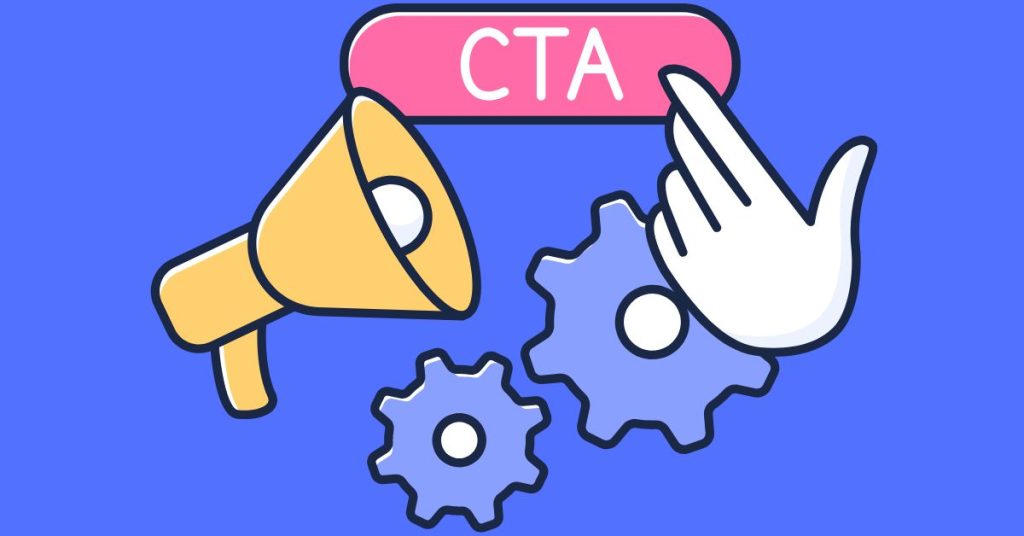
CTA stands for “Call to Action” in the context of marketing and advertising. It refers to a specific directive or prompt given to the audience to encourage them to take a desired action. A well-crafted call to action is designed to guide and motivate users to engage further, convert, or complete a particular task that aligns with the marketer’s goals.
CTAs are commonly used across various marketing channels, including websites, landing pages, emails, social media posts, advertisements, and more. They serve as a crucial element in the conversion process by directing and influencing user behavior. CTAs can be presented in the form of buttons, links, banners, or textual statements, often accompanied by compelling visuals or persuasive copywriting.
Digital product
A digital product refers to any intangible or virtual item that is created, distributed, and consumed in a digital format. Unlike physical products, which are tangible and can be held or touched, digital products exist in a digital or electronic form and are accessed or delivered through digital devices, such as computers, smartphones, or tablets.
Domain
A domain name is a unique and human-readable address that identifies a specific location on the internet. It serves as a user-friendly identifier for websites and online resources, making it easier for people to access web pages and digital content without needing to remember complex numerical IP addresses.
A domain name consists of two main parts: the second-level domain (SLD) and the top-level domain (TLD). The SLD is the part of the domain name that comes before the dot (e.g., “example” in “example.com”), while the TLD is the part that comes after the dot (e.g., “.com” in “example.com”).
For example, in the domain name “www.example.com“:
- “www” is a subdomain (not always required, but commonly used for specific purposes).
- “example” is the second-level domain (SLD).
- “.com” is the top-level domain (TLD).
Downsell
In marketing, a downsell refers to a sales technique or strategy used to offer an alternative, usually lower-priced product or service to a potential customer who has declined or shown resistance to purchasing a higher-priced or premium offering. It is a way to salvage a sales opportunity and continue engaging with the customer by presenting a more affordable option that still meets their needs.
When a customer shows hesitation or rejects an initial offer, such as a high-priced product or a premium package, a downsell is employed as an alternative solution to keep the customer interested and potentially make a purchase. The downsell aims to address the customer’s objections, budget constraints, or any other barriers that prevented them from accepting the original offer.
Ecommerce
Ecommerce, short for electronic commerce, refers to the buying and selling of goods and services over the internet.
It involves conducting business transactions online, where customers can browse, select, and purchase products or services from virtual stores or websites.
Ecommerce enables individuals and businesses to engage in commercial activities without the need for physical storefronts or in-person interactions.
Customers can make purchases using various digital payment methods, and transactions are typically facilitated through secure online platforms.
Ecommerce offers convenience, accessibility, and a wide range of product options to consumers, while also providing businesses with a global reach and the ability to operate 24/7.
Email list
An email list is like a collection of email addresses belonging to people who have given permission to receive messages from a particular sender or organization.
It’s similar to having a list of contacts in your phone, but in this case, it’s a list of people who are interested in getting emails from a specific source.
Email lists are commonly used for sending newsletters, promotional offers, updates, or other information to a group of subscribers who have shown interest in the sender’s content or products.
Building and managing an email list is an essential part of email marketing, allowing businesses and individuals to reach their audience directly through email communications.
Email marketing
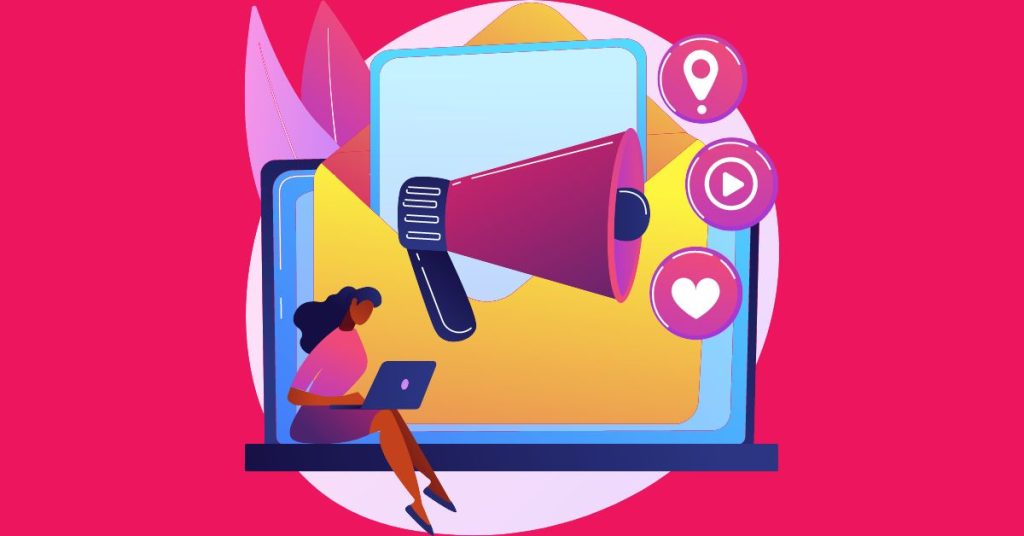
Email marketing refers to the practice of using email as a marketing channel to communicate with a targeted audience, promote products or services, build relationships, and drive desired actions. It involves sending commercial messages, newsletters, updates, or promotional content to individuals who have willingly provided their email addresses and consented to receive communication from a business, organization, or individual.
Evergreen
In the context of marketing and content creation, the term “evergreen” refers to content that remains relevant, valuable, and useful over an extended period. It is content that doesn’t become outdated quickly and continues to provide value to the audience, irrespective of the time it was created or accessed. The term “evergreen” is derived from the concept of evergreen trees, which retain their green foliage throughout the year.
Evergreen content is characterized by its enduring nature and the ability to stand the test of time. It is not tied to specific trends, events, or time-sensitive information. Instead, it focuses on providing timeless and fundamental information, insights, or solutions that remain valuable to readers or viewers regardless of when they engage with it.
Exit Intent
Exit intent refers to a technology or technique that detects when a user is about to leave a website or close a web page.
When the system detects this intent to exit, it triggers a specific action, typically in the form of a pop-up or overlay, to capture the user’s attention and encourage them to stay or take a desired action.
Exit intent technology uses mouse movement, cursor behavior, or other indicators to predict when a user is about to leave the page.
The purpose of using exit intent is to engage users who are about to leave, provide them with a last-minute offer, invite them to subscribe to a newsletter, or present any other relevant content or call-to-action to retain their interest and potentially convert them into customers.
Landing page
A landing page is like a special welcome mat on a website. It’s a single web page designed to focus on a specific goal, like getting people to buy something, sign up for something, or learn more about something. Instead of wandering around a whole website, visitors “land” on this page directly from an ad, a link, or a search result. The page usually has clear and simple content with a call to action, making it easier for visitors to do what the page wants them to do, whether that’s buying, signing up, or exploring further.
Lead generation
Lead generation refers to the process of attracting and capturing potential customers, known as leads, who have shown interest in a product, service, or brand. It involves various marketing and sales tactics aimed at initiating and nurturing relationships with potential customers, with the ultimate goal of converting them into paying customers.
Lead magnet
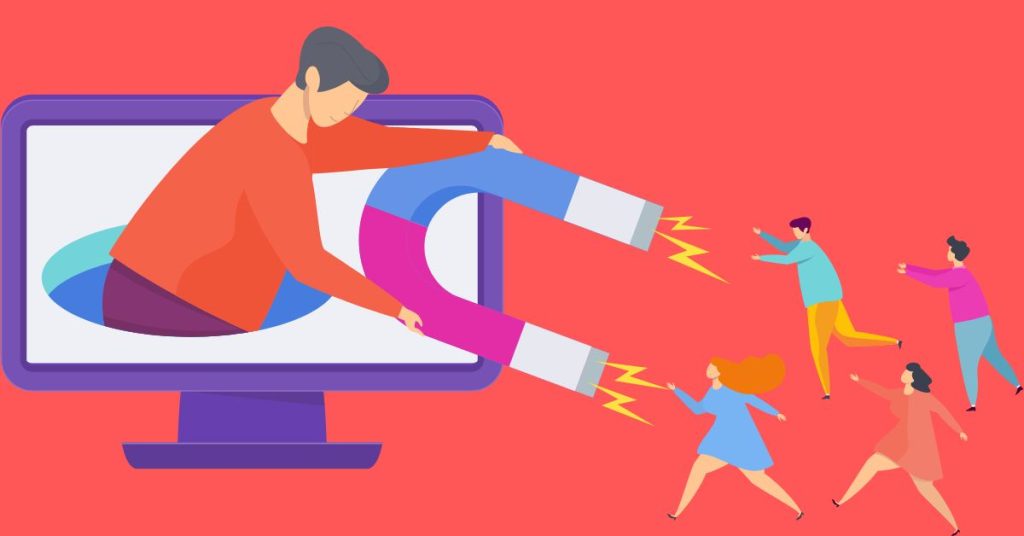
A lead magnet is a valuable incentive or offer provided by a business or individual to potential customers in exchange for their contact information, usually their email address or other relevant details. It is designed to attract and capture leads, allowing businesses to initiate and nurture a relationship with potential customers.
The purpose of a lead magnet is to entice individuals to willingly provide their information, thereby converting them from anonymous visitors to identifiable leads. By offering something of value in return for their contact details, businesses can build their email lists and establish a direct line of communication with potential customers. Lead magnets are typically used in various digital marketing channels, including websites, landing pages, social media campaigns, or email marketing.
Niche
In simple terms, a niche refers to a specialized and specific segment or area within a larger market. It’s like finding your own unique space or focus within an industry or field.
Instead of trying to appeal to everyone, a niche focuses on catering to a particular group of people with specific interests, needs, or preferences.
This specialization allows businesses or individuals to become experts in their chosen area and serve their target audience more effectively.
By targeting a niche, you can stand out from the competition and build a dedicated and loyal following who appreciates the unique value you offer in that specific domain.
Organic traffic
In the context of traffic, “organic” typically refers to the visitors who come to a website or platform without any paid advertising or promotion.
These are the people who find and visit a website naturally, often through search engines like Google or by clicking on a link from another website.
They haven’t been directed to the site by paid ads or other marketing efforts.
Think of it like foot traffic into a store.
If people come into a shop because they saw a big advertisement outside, that’s like paid traffic.
But if they come in because they heard about the store from a friend or just happened to pass by, that’s more like organic traffic.
In the digital world, organic traffic is often seen as valuable because it indicates that people are genuinely interested in the content or offerings of a website, rather than being directed there through advertising.
Passive income
Passive income refers to earnings or income streams that are generated with minimal ongoing effort or active involvement. It is income that continues to be generated even when the individual is not actively working or putting in continuous effort. Passive income is often contrasted with active income, which requires regular work or active participation to generate earnings.
Pop-up
Pop-ups refer to small windows or boxes that appear on top of the main content of a website.
These windows often contain additional information, offers, or requests for user interaction.
Pop-ups can be triggered by various actions, such as when a user enters a website, clicks on a specific element, or attempts to exit the page (exit intent).
The purpose of pop-ups can vary, but commonly they are used to grab the user’s attention, convey important messages, encourage newsletter sign-ups, promote special offers, or ask for feedback.
While pop-ups can be effective in capturing user attention and driving specific actions, they can also be perceived as intrusive or annoying if not used thoughtfully.
Promotional codes
Promotional codes, also known as promo codes or coupon codes, are special alphanumeric combinations or words that customers can enter during the checkout process to receive discounts or other incentives on their purchases.
These codes are typically provided by businesses as part of their marketing and promotional strategies to attract customers and encourage them to make a purchase.
Promotional codes can offer various benefits, such as percentage or flat-rate discounts, free shipping, buy-one-get-one-free (BOGOF) offers, or free gifts.
Customers can find these codes through various channels, including email newsletters, social media promotions, or special deals on the company’s website.
By applying a valid promotional code at the time of purchase, customers can enjoy savings or additional perks, making their shopping experience more affordable and rewarding.
ROI
ROI stands for Return on Investment. It is a metric used to evaluate the profitability or effectiveness of an investment or business activity by comparing the return or gain generated to the cost or investment made. ROI is expressed as a percentage or a ratio, indicating the return relative to the initial investment.
The formula to calculate ROI is as follows:
ROI = (Net Profit / Cost of Investment) x 100
Here, the net profit refers to the total earnings or benefits gained from the investment, while the cost of investment represents the total amount of money or resources invested.
Sales funnel

A sales funnel, also known as a purchase funnel or conversion funnel, is a visual representation of the customer journey from initial awareness to making a purchase. It illustrates the step-by-step process that potential customers go through as they move closer to becoming paying customers. The primary goal of a sales funnel is to guide and optimize this customer journey, increasing the likelihood of conversion and driving sales.
Scarcity
In the context of digital marketing, scarcity refers to creating a sense of limited availability or exclusivity for a product, service, or offer in order to stimulate demand and drive consumer action. It leverages the psychological principle that people tend to value and desire things that are perceived as scarce or in short supply.
Segmentation
The practice of dividing your email subscriber list into smaller, more specific groups based on certain criteria or characteristics.
These criteria can include factors but not limited to demographics, interests, past purchase behavior, engagement levels, or any other relevant data.
By segmenting your email list, you can send targeted and personalized emails to different groups of subscribers, tailoring your messages to their specific needs and preferences.
This allows you to improve the effectiveness of your email marketing campaigns by delivering more relevant content to each segment, ultimately increasing engagement, conversions, and overall customer satisfaction.
SEO
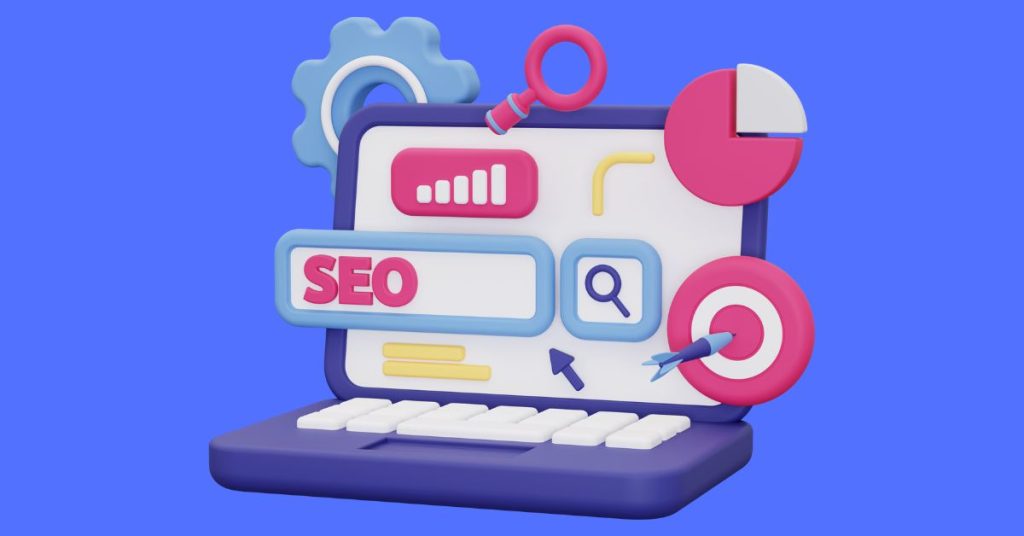
SEO stands for Search Engine Optimization. It refers to the practice of optimizing a website, its content, and its online presence to improve its visibility and rankings in search engine results pages (SERPs). The goal of SEO is to attract organic (non-paid) traffic from search engines by ensuring that a website appears prominently in relevant search queries.
Search engines, such as Google, Bing, and Yahoo, use complex algorithms to determine the relevance and quality of websites and webpages in response to user search queries. SEO involves understanding these algorithms and implementing strategies to align with the ranking factors that search engines consider important.
Short link
A short link, also known as a shortened URL or URL shortener, is a compact and condensed version of a longer website address or URL. It is created by using a URL shortening service that takes a lengthy URL and converts it into a shorter, more manageable link.
The primary purpose of using short links is to make long and complex URLs more concise, user-friendly, and shareable.
Social media
Social media refers to online platforms and applications that enable users to create, share, and interact with content, as well as connect and communicate with others in a virtual social environment. It is a form of digital communication that allows individuals, businesses, organizations, and communities to engage with one another through various digital channels.
Target audience
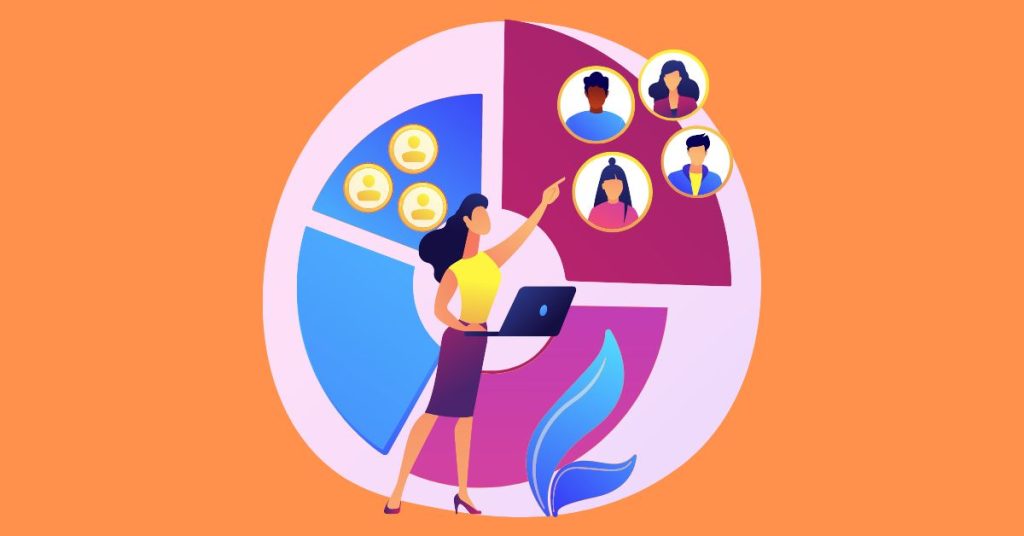
A target audience refers to a specific group of individuals or a defined demographic that a business, organization, or content creator aims to reach and engage with through their products, services, or messages. Identifying a target audience is a fundamental step in developing effective marketing strategies and communication plans.
Traffic
In the context of digital marketing, traffic refers to the flow of visitors or users to a website, app, or other digital platform. It represents the number of individuals who access and interact with the digital property.
Website traffic is a crucial metric for businesses and marketers as it indicates the reach, visibility, and popularity of their online presence. Increasing website traffic is a common goal in digital marketing strategies, as it can lead to various benefits such as brand exposure, customer engagement, lead generation, and sales conversions.
Transactional Emails
These are messages that are triggered by specific actions or transactions made by users.
These emails are usually automated and sent in response to user interactions, such as making a purchase, signing up for an account, or requesting a password reset.
Unlike promotional or marketing emails, transactional emails primarily serve to provide important information or confirmations related to the user’s transaction.
Examples of transactional emails include order confirmations, shipping notifications, password reset emails, account activation emails, and receipts.
The main purpose of transactional emails is to facilitate and enhance the user experience by delivering timely and relevant information related to their actions or transactions.
Upsell
An upsell refers to a sales technique where a business offers customers a higher-priced or upgraded product or service in addition to, or instead of, their original purchase. It is a strategy aimed at increasing the average transaction value and maximizing the revenue from each customer.
Upselling involves persuading customers to consider a more premium or advanced version of the product or service they are interested in. The upsell offer typically provides additional features, enhanced benefits, or a higher level of performance compared to the original offering. The goal is to encourage customers to upgrade their purchase by highlighting the added value they would receive.
UX
UX stands for User Experience. It refers to the overall experience that a user has while interacting with a website, application, or any other digital product or service. UX encompasses various factors, such as usability, accessibility, visual design, and interactivity, all aimed at creating a positive and satisfying experience for the user.
The goal of UX in digital marketing is to understand the needs, preferences, and behaviors of the target audience and design digital experiences that meet those expectations effectively. By focusing on UX, businesses aim to enhance customer satisfaction, engagement, and ultimately drive desired actions, such as conversions, sales, or brand loyalty.
Video Marketing
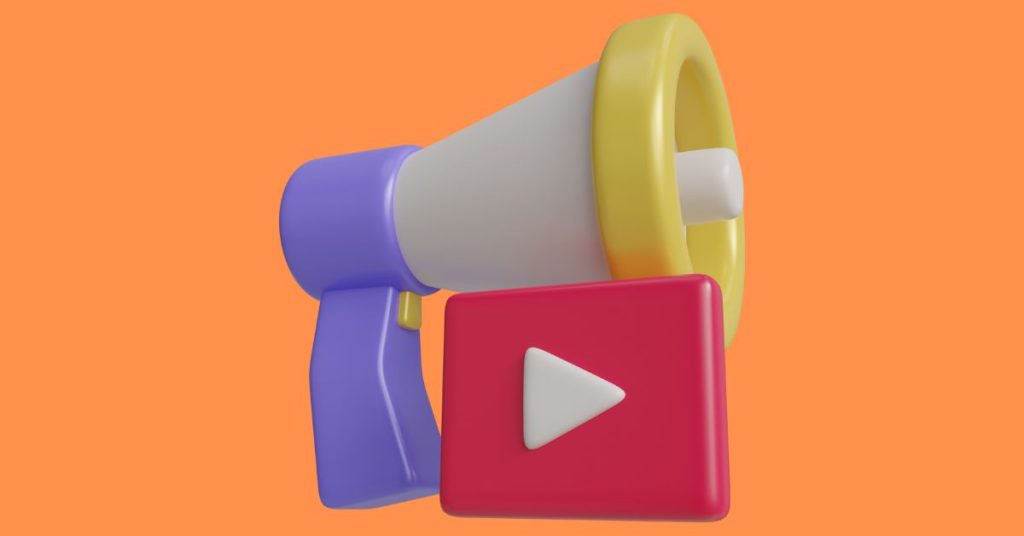
Video marketing refers to the use of videos to promote, market, and communicate with an audience. It involves creating and distributing video content that is specifically designed to engage and resonate with viewers, with the goal of achieving marketing objectives such as increasing brand awareness, driving website traffic, generating leads, or boosting sales.
Video has become an increasingly popular and effective medium in the digital marketing landscape due to its ability to deliver engaging and immersive storytelling experiences. It allows businesses to convey their messages in a visually compelling and dynamic format that captures the attention of viewers and elicits emotional responses.
Webinar
A webinar is like an online seminar or workshop.
It’s a live or pre-recorded presentation, lecture, or discussion that happens on the internet, allowing people from different locations to participate in real-time.
Webinars often include audio and visual elements, like slides, videos, and chat features, to engage the audience.
They are used for various purposes, such as education, training, marketing, or sharing information.
Imagine it as a virtual event where you can listen to a speaker, watch presentations, and interact with others, all from the comfort of your computer or mobile device.
Continue Learning
- 1
- 2
© copyright 2022 by DigitallyPromote.me
© copyright 2024 by DigitallyPromote.me

